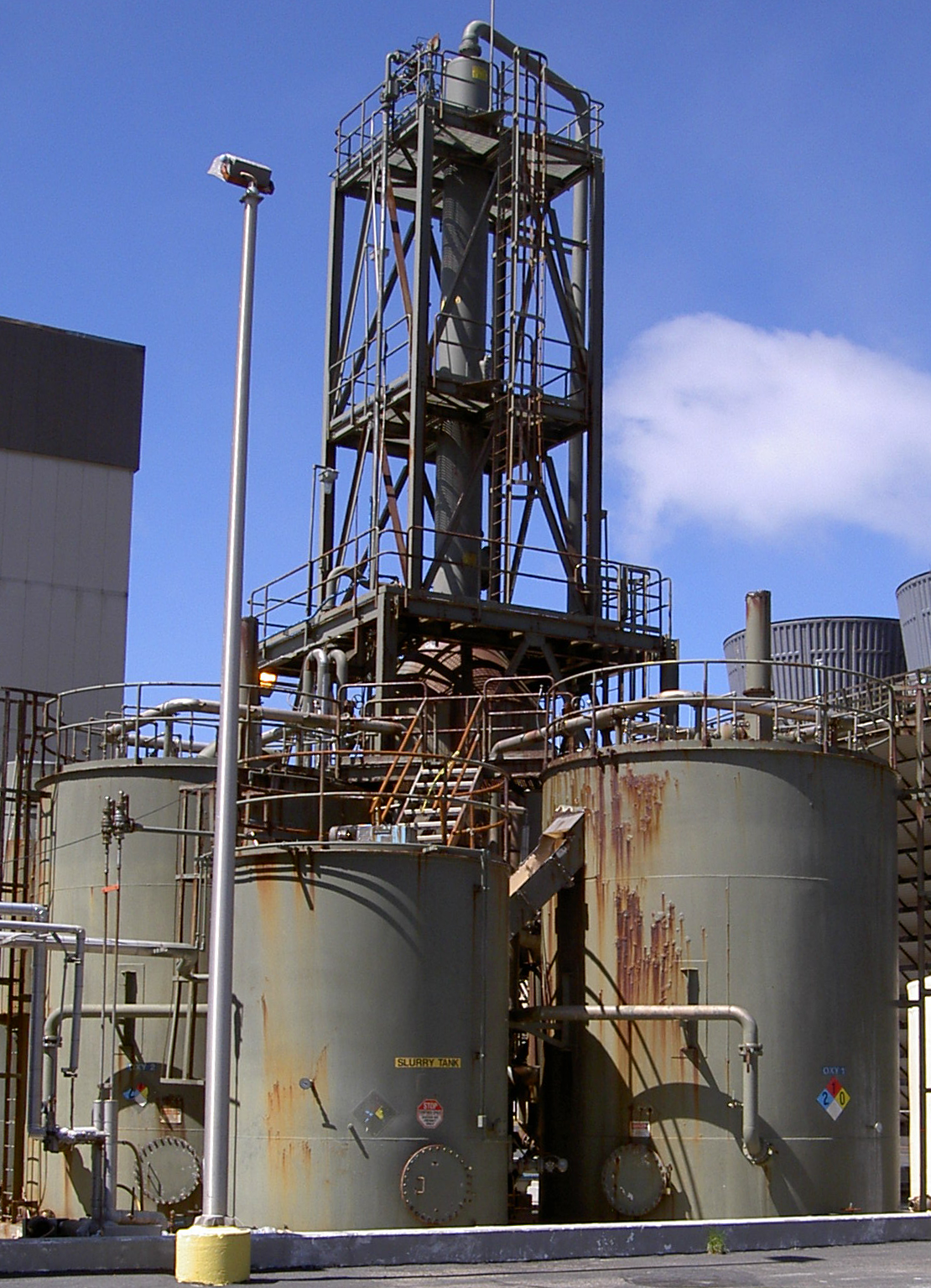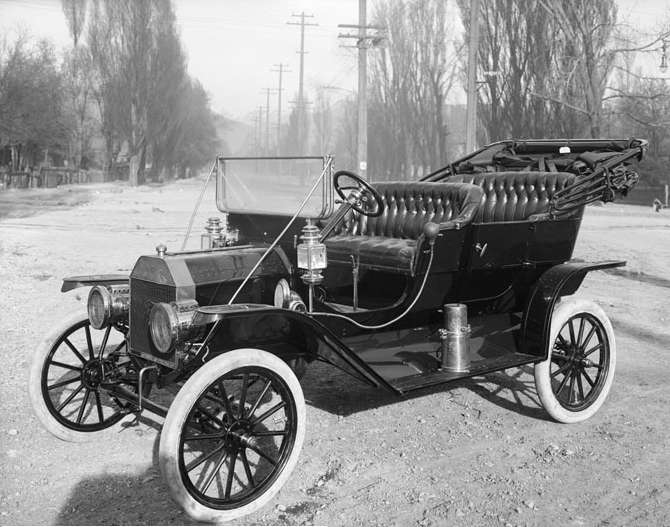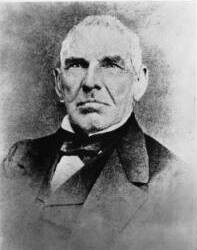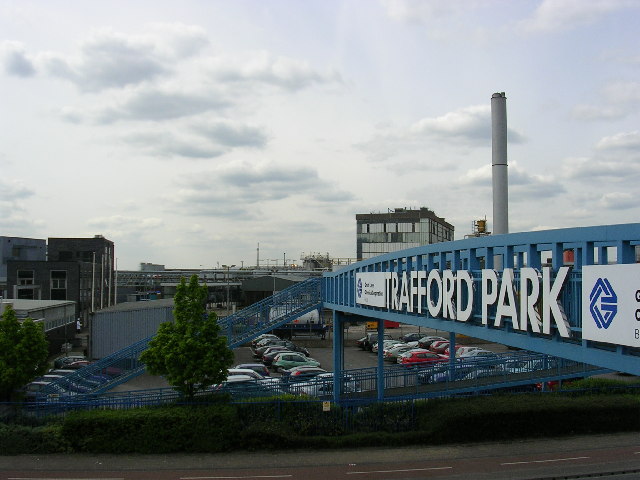|
Stretford Process
The Stretford process was developed during the late 1950s to remove hydrogen sulfide (H2S) from town gas. It was the first liquid phase, oxidation process for converting H2S into sulfur to gain widespread commercial acceptance. Developed by Tom Nicklin of the North Western Gas Board (NWGB) and the Clayton Aniline Company, in Manchester, England, the name of the process was derived from the location of the NWGB's laboratories, in Stretford. The process uses reduction-oxidation (redox) chemistry to oxidise the H2S into elemental sulfur, in an alkaline solution containing vanadium as an oxygen carrier. The process earned the NWGB a Queen's Award to Industry in 1968. Although it was used in the gas industry for only a relatively short time, the process was licensed by the NWGB and used successfully in a variety of industries worldwide. At the height of its popularity during the 1970s there were more than a dozen companies offering the Stretford technology. By 1987 about 170 Stretford ... [...More Info...] [...Related Items...] OR: [Wikipedia] [Google] [Baidu] |
Stretford Reactor Sonoma Calpine 3 Plant 4790
Stretford is a market town in Trafford, Greater Manchester, England. It is situated on flat ground between the River Mersey and the Manchester Ship Canal, south of Manchester city centre, south of Salford and north-east of Altrincham. Stretford borders Chorlton-cum-Hardy to the east, Moss Side and Whalley Range to the south-east, Hulme to the north-east, Urmston to the west, Salford to the north, and Sale to the south. The Bridgewater Canal bisects the town. Within the boundaries of the historic county of Lancashire, Stretford was an agricultural village in the 19th century; it was known locally as ''Porkhampton'', due to the large number of pigs produced for the Manchester market. It was also an extensive market-gardening area, producing more than of vegetables each week for sale in Manchester by 1845. The arrival of the Manchester Ship Canal in 1894, and the subsequent development of the Trafford Park industrial estate, accelerated the industrialisation th ... [...More Info...] [...Related Items...] OR: [Wikipedia] [Google] [Baidu] |
Vanadium
Vanadium is a chemical element with the symbol V and atomic number 23. It is a hard, silvery-grey, malleable transition metal. The elemental metal is rarely found in nature, but once isolated artificially, the formation of an oxide layer ( passivation) somewhat stabilizes the free metal against further oxidation. Spanish scientist Andrés Manuel del Río discovered compounds of vanadium in 1801 in Mexico by analyzing a new lead-bearing mineral he called "brown lead". Though he initially presumed its qualities were due to the presence of a new element, he was later erroneously convinced by French chemist Hippolyte Victor Collet-Descotils that the element was just chromium. Then in 1830, Nils Gabriel Sefström generated chlorides of vanadium, thus proving there was a new element, and named it "vanadium" after the Scandinavian goddess of beauty and fertility, Vanadís (Freyja). The name was based on the wide range of colors found in vanadium compounds. Del Rio's lead mineral w ... [...More Info...] [...Related Items...] OR: [Wikipedia] [Google] [Baidu] |
Hydrodesulfurization
Hydrodesulfurization (HDS) is a catalytic chemical process widely used to remove sulfur (S) from natural gas and from refined petroleum products, such as gasoline or petrol, jet fuel, kerosene, diesel fuel, and fuel oils. The purpose of removing the sulfur, and creating products such as ultra-low-sulfur diesel, is to reduce the sulfur dioxide () emissions that result from using those fuels in automotive vehicles, aircraft, railroad locomotives, ships, gas or oil burning power plants, residential and industrial furnaces, and other forms of fuel combustion. Another important reason for removing sulfur from the naphtha streams within a petroleum refinery is that sulfur, even in extremely low concentrations, poisons the noble metal catalysts (platinum and rhenium) in the catalytic reforming units that are subsequently used to upgrade the octane rating of the naphtha streams. The industrial hydrodesulfurization processes include facilities for the capture and removal of the re ... [...More Info...] [...Related Items...] OR: [Wikipedia] [Google] [Baidu] |
Sour Gas
Sour gas is natural gas or any other gas containing significant amounts of hydrogen sulfide (H2S). Natural gas is usually considered sour if there are more than 5.7 milligrams of H2S per cubic meter of natural gas, which is equivalent to approximately 4 ppm by volume under standard temperature and pressure.NaturalGas.org website page ''Processing Natural Gas'' However, this threshold varies by country, state, or even agency or application. For instance, the Texas Railroad Commission considers a sour gas pipeline one that carries gas over 100 ppm by volume of H2S. However, the [...More Info...] [...Related Items...] OR: [Wikipedia] [Google] [Baidu] |
Long Beach, California
Long Beach is a city in Los Angeles County, California. It is the 42nd-most populous city in the United States, with a population of 466,742 as of 2020. A charter city, Long Beach is the seventh-most populous city in California. Incorporated in 1897, Long Beach lies in Southern California in the southern part of Los Angeles County. Long Beach is approximately south of downtown Los Angeles, and is part of the Gateway Cities region. The Port of Long Beach is the second busiest container port in the United States and is among the world's largest shipping ports. The city is over an oilfield with minor wells both directly beneath the city as well as offshore. The city is known for its waterfront attractions, including the permanently docked and the Aquarium of the Pacific. Long Beach also hosts the Grand Prix of Long Beach, an IndyCar race and the Long Beach Pride Festival and Parade. California State University, Long Beach, one of the largest universities in Califo ... [...More Info...] [...Related Items...] OR: [Wikipedia] [Google] [Baidu] |
Gas Act 1972
The Gas Act 1972 (1972 c. 60) was an Act of the Parliament of the United Kingdom which restructured the British gas industry. It established the British Gas Corporation to exercise full responsibility for the oversight, control and operation of the gas industry. The twelve autonomous Area Gas Boards which had managed the industry in their areas now became regions of the British Gas Corporation. The Gas Council, also established under the Gas Act 1948, was abolished and the Gas Act 1948 was repealed. The provisions of the Act came into force on 1 January 1973. Background The principal role of the twelve Area Gas Boards, established under the Gas Act 1948, was to maintain a supply of gas to match the demand. This was through the operation of local gas works manufacturing gas by coal carbonisation or catalytic reforming of refinery light-end products such as methane, naphtha or light oils. The advent of natural gas from the North Sea, first landed onshore in 1967, shifted the ... [...More Info...] [...Related Items...] OR: [Wikipedia] [Google] [Baidu] |
British Gas Plc
British Gas plc was an energy and home services provider in the United Kingdom. It was formed when the British Gas Corporation was privatised as a result of the Gas Act 1986, instigated by the government of Margaret Thatcher Margaret Hilda Thatcher, Baroness Thatcher (; 13 October 19258 April 2013) was Prime Minister of the United Kingdom from 1979 to 1990 and Leader of the Conservative Party from 1975 to 1990. She was the first female British prime ... and superseding the Gas Act 1972. History The company was formed when the Conservative Government privatised the British Gas Corporation in December 1986, with its shares floated on the London stock market. To encourage individuals to become shareholders, the offer was intensely advertised with the "If you see Sid...Tell him!" campaign. The privatisation was criticised by Baron Gray of Contin who said it broke a key part of the Conservative's 1983 manifesto that the party would not simply replace one monop ... [...More Info...] [...Related Items...] OR: [Wikipedia] [Google] [Baidu] |
Queen's Award To Industry
The Queen's Awards for Enterprise is an awards programme for British businesses and other organizations who excel at international trade, innovation, sustainable development or promoting opportunity (through social mobility). They are the highest official UK awards for British businesses. The scheme was established as The Queen's Award to Industry by a royal warrant of 30 November 1965, and awards are given for outstanding achievement by UK businesses in the categories of innovation, international trade, sustainable development and promoting opportunity through social mobility. Each award is valid for five years and winners are invited to a royal reception and are presented with the award at their company premises by one of the Queen's representatives, a Lord-lieutenant. Winners are also able to fly the Queen's Awards flag at their main office, and use the emblem on marketing materials such as packaging and adverts. History Every April winners of the Queen's Awards for Enterpris ... [...More Info...] [...Related Items...] OR: [Wikipedia] [Google] [Baidu] |
Redox
Redox (reduction–oxidation, , ) is a type of chemical reaction in which the oxidation states of substrate (chemistry), substrate change. Oxidation is the loss of Electron, electrons or an increase in the oxidation state, while reduction is the gain of electrons or a decrease in the oxidation state. There are two classes of redox reactions: * ''Electron-transfer'' – Only one (usually) electron flows from the reducing agent to the oxidant. This type of redox reaction is often discussed in terms of redox couples and electrode potentials. * ''Atom transfer'' – An atom transfers from one substrate to another. For example, in the rusting of iron, the oxidation state of iron atoms increases as the iron converts to an oxide, and simultaneously the oxidation state of oxygen decreases as it accepts electrons released by the iron. Although oxidation reactions are commonly associated with the formation of oxides, other chemical species can serve the same function. In hydrogen ... [...More Info...] [...Related Items...] OR: [Wikipedia] [Google] [Baidu] |
Hydrogen Sulfide
Hydrogen sulfide is a chemical compound with the formula . It is a colorless chalcogen-hydride gas, and is poisonous, corrosive, and flammable, with trace amounts in ambient atmosphere having a characteristic foul odor of rotten eggs. The underground mine gas term for foul-smelling hydrogen sulfide-rich gas mixtures is ''stinkdamp''. Swedish chemist Carl Wilhelm Scheele is credited with having discovered the chemical composition of purified hydrogen sulfide in 1777. The British English spelling of this compound is hydrogen sulphide, a spelling no longer recommended by the Royal Society of Chemistry or the International Union of Pure and Applied Chemistry. Hydrogen sulfide is toxic to humans and most other animals by inhibiting cellular respiration in a manner similar to hydrogen cyanide. When it is inhaled or it or its salts are ingested in high amounts, damage to organs occurs rapidly with symptoms ranging from breathing difficulties to convulsions and death. Despite this, ... [...More Info...] [...Related Items...] OR: [Wikipedia] [Google] [Baidu] |
Stretford
Stretford is a market town in Trafford, Greater Manchester, England. It is situated on flat ground between the River Mersey and the Manchester Ship Canal, south of Manchester city centre, south of Salford, Greater Manchester, Salford and north-east of Altrincham. Stretford borders Chorlton-cum-Hardy to the east, Moss Side and Whalley Range, Manchester, Whalley Range to the south-east, Hulme to the north-east, Urmston to the west, Salford to the north, and Sale, Greater Manchester, Sale to the south. The Bridgewater Canal bisects the town. Within the boundaries of the Historic counties of England, historic county of Lancashire, Stretford was an agricultural village in the 19th century; it was known locally as ''Porkhampton'', due to the large number of pigs produced for the Manchester market. It was also an extensive market-gardening area, producing more than of vegetables each week for sale in Manchester by 1845. The arrival of the Manchester Ship Canal in 1894, and the su ... [...More Info...] [...Related Items...] OR: [Wikipedia] [Google] [Baidu] |
Greater Manchester
Greater Manchester is a metropolitan county and combined authority area in North West England, with a population of 2.8 million; comprising ten metropolitan boroughs: Manchester, Salford, Bolton, Bury, Oldham, Rochdale, Stockport, Tameside, Trafford and Wigan. The county was created on 1 April 1974, as a result of the Local Government Act 1972, and designated a functional city region on 1 April 2011. Greater Manchester is formed of parts of the historic counties of Cheshire, Lancashire and the West Riding of Yorkshire. Greater Manchester spans , which roughly covers the territory of the Greater Manchester Built-up Area, the second most populous urban area in the UK. Though geographically landlocked, it is connected to the sea by the Manchester Ship Canal which is still open to shipping in Salford and Trafford. Greater Manchester borders the ceremonial counties of Cheshire (to the south-west and south), Derbyshire (to the south-east), West Yorkshire (to the nort ... [...More Info...] [...Related Items...] OR: [Wikipedia] [Google] [Baidu] |






